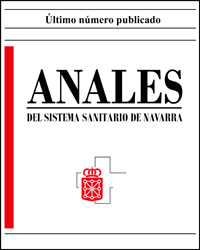Work accidents. ACSOM a new orientation for automatic risk management
Keywords:
Accidentes laborales. Riesgos laborales. Planificación de riesgos. Métodos estadísticos.Abstract
Background. To analyse workplace accidents, by considering the risks that provoke such accidents, bearing in mind that the final aim is to establish a classification of priority risks. This information will make it possible to undertake the opportune preventive actions against the most vulnerable risks. Material and Methods. A set of statistical-mathematical techniques, essentially based on statistical contrasts, was applied to work accidents taking place during a three year period in a Spanish Research and Development (R+D) organisation with 8,780 workers. The reference standard used for comparative analysis was the ensemble of accidents in Spain over an 11 year period. Results. After application of the new methodology, the two risks requiring priority preventive actions are interaction with aggressive substances and accidents with moving machinery. If the two risks with the highest frequency had been considered alone, without taking into account the vulnerability of each, the priority risks would have been overexertion and falls at the same level. Conclusions. The analysis provides a list of the most vulnerable risks accidents on which action should be taken and thus achieve greater effectiveness in establishing which actions should be considered opportune.Downloads
Downloads
Published
How to Cite
Issue
Section
License
La revista Anales del Sistema Sanitario de Navarra es publicada por el Departamento de Salud del Gobierno de Navarra (España), quien conserva los derechos patrimoniales (copyright ) sobre el artículo publicado y favorece y permite la difusión del mismo bajo licencia Creative Commons Reconocimiento-CompartirIgual 4.0 Internacional (CC BY-SA 4.0). Esta licencia permite copiar, usar, difundir, transmitir y exponer públicamente el artículo, siempre que siempre que se cite la autoría y la publicación inicial en Anales del Sistema Sanitario de Navarra, y se distinga la existencia de esta licencia de uso.








